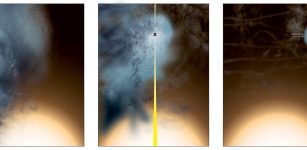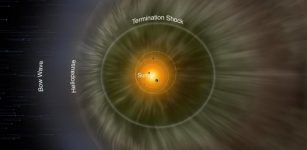Earth May Have Mini-Moons We Haven’t Discovered Yet
MessageToEagle.com – Everyone knows the Earth has a Moon and we depend on it for our survival. If our Moon suddenly vanished we would face serious problems, and conditions for living beings would change dramatically. These changes would happen over the course of thousands to millions of years, which may sound like a long time, but the changes would be dramatic.
Small near-Earth asteroids are important targets of study because not much is known about them. By characterizing the smallest of the bunch, scientists can better understand the population of objects from which they originate: large asteroids, which have a much smaller likelihood of impacting Earth. Credit: NASA/JPL-Caltech
Without the Moon, the stability of Earth’s axis would be lost again, and with it, our predictable temperatures. Fortunately, we do have a Moon and there are no indications it we vanish anytime soon.
In another article on MessageToEagle.com we discussed the possibility that our planet may once have had a second Moon.
Another intriguing theory is that Earth could be surrounded by several mini-moons we haven’t yet detected.
Such mini-moons are small and fast-moving asteroid temporarily captured in orbit around Earth.
Understanding such mini-moons will vastly improve our scientific understanding of asteroids and the Earth-Moon system.
“Mini-moons can provide interesting science and technology testbeds in near-Earth space. These asteroids are delivered towards Earth from the main asteroid belt between Mars and Jupiter via gravitational interactions with the Sun and planets in our solar system,” reports Dr Robert Jedicke, lead author, based at the University of Hawaii, Honolulu, USA. “The challenge lies in finding these small objects, despite their close proximity.”
“At present we don’t fully understand what asteroids are made of,” adds Dr Mikael Granvik, co-author, affiliated with both the Luleå University of Technology, Sweden and the University of Helsinki, Finland. “Missions typically return only tiny amounts of material to Earth. Meteorites provide an indirect way of analyzing asteroids, but Earth’s atmosphere destroys weak materials when they pass through.
“Mini-moons are perfect targets for bringing back significant chunks of asteroid material, shielded by a spacecraft, which could then be studied in detail back on Earth.”
Predicted to be up to 1-2 meters in size, mini-moons are temporarily gravitationally bound in the Earth-Moon system. They may just fly-by the Earth or make at least one revolution around the planet, eventually escaping the gravitational tug of our planet or entering our atmosphere.
Reviewing the last ten years of mini-moon research, Jedicke and colleagues show that existing technology can only detect these small, fast moving objects by chance.
See also:
Mystery Of Planet V – Was There Once A 5th Planet Between Mars And The Asteroid Belt?
Miranda: Probably The Strangest Of Uranus’ Moons
Our Moon Is A Planet – Scientists Say
“Once we start finding mini-moons at a greater rate they will be perfect targets for satellite missions. We can launch short and therefore cheaper missions, using them as testbeds for larger space missions and providing an opportunity for the fledgling asteroid mining industry to test their technology.
“Mini-moons are small, moving across the sky much faster than most asteroid surveys can detect,” explains Jedicke. “Only one minimoon has ever been discovered orbiting Earth, the relatively large object designated 2006 RH120, of a few meters in diameter.
“Once we start finding mini-moons at a greater rate they will be perfect targets for satellite missions. We can launch short and therefore cheaper missions, using them as testbeds for larger space missions and providing an opportunity for the fledgling asteroid mining industry to test their technology,” Jedicke said.
“We don’t know whether small asteroids are monolithic blocks of rock, fragile sand piles, or something in between,” says Granvik. “Mini-moons that spend significant time in orbit around Earth allow us to study the density of these bodies and the forces that act within them, and therefore solve this mystery.”
Jedicke concludes by sharing his aspirations for these asteroids: “I hope that humans will someday venture into the solar system to explore the planets, asteroids and comets — and I see mini-moons as the first stepping stones on that voyage.”
MessageToEagle.com
Expand for referencesRobert Jedicke, Bryce T. Bolin, William F. Bottke, Monique Chyba, Grigori Fedorets, Mikael Granvik, Lynne Jones, Hodei Urrutxua. Earth’s Minimoons: Opportunities for Science and Technology. Frontiers in Astronomy and Space Sciences, 2018; 5 DOI: 10.3389/fspas.2018.00013











